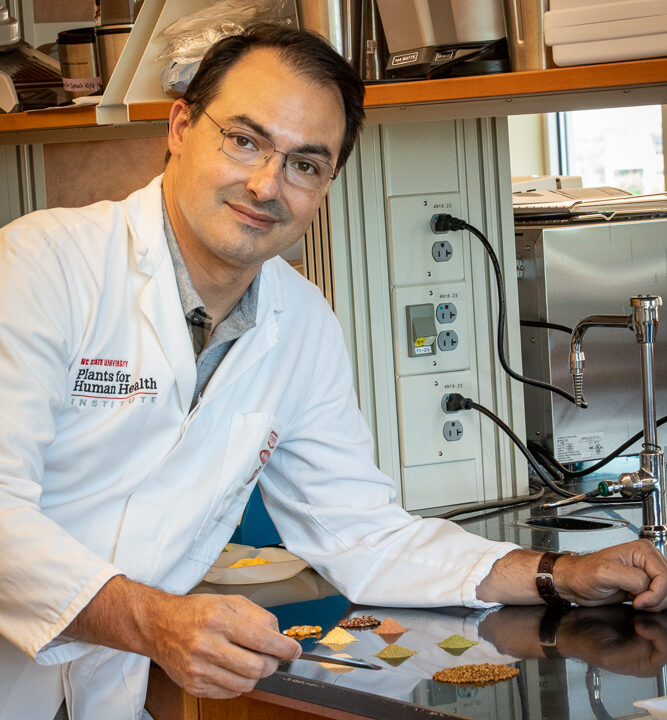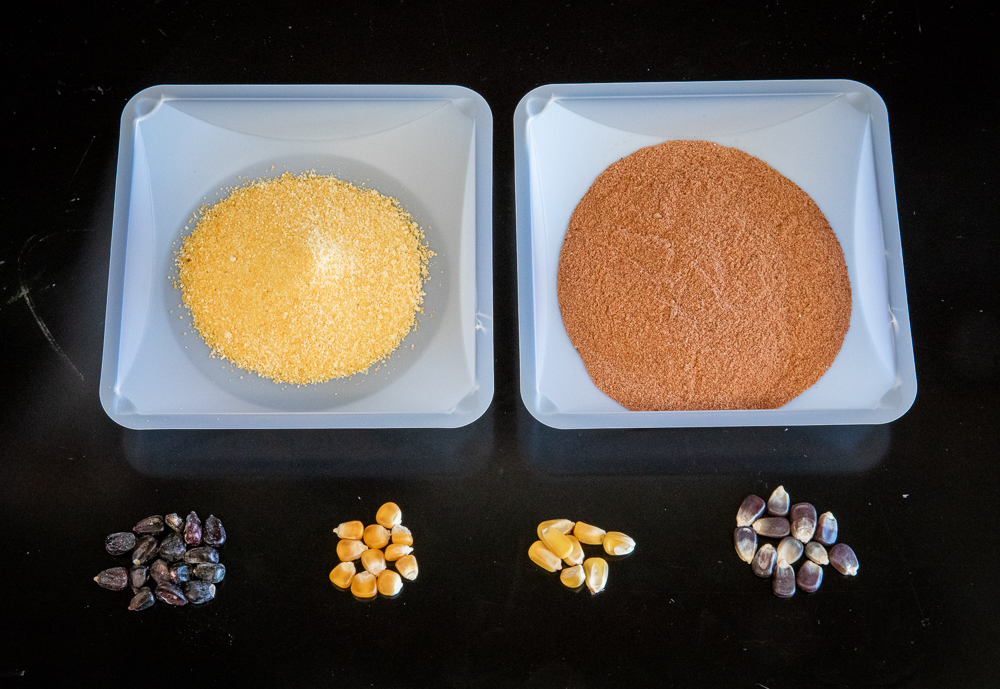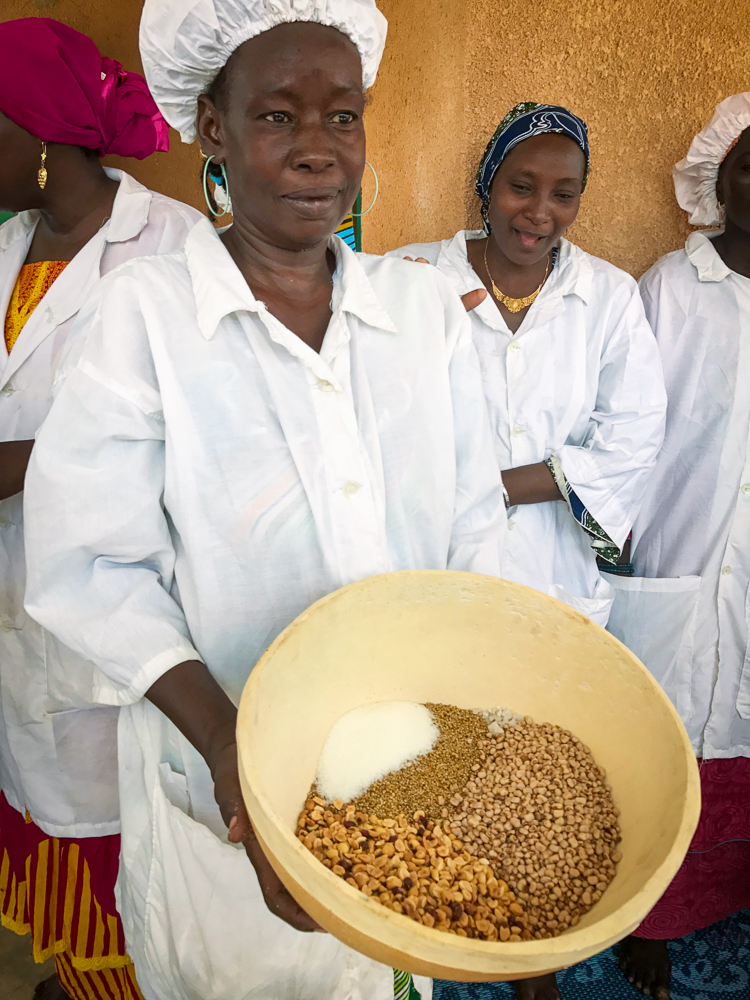From Seed to Gut: Digestion Models Reveal Bioavailability Through GI Tract
It’s not just the tools in Dr. Mario Ferruzzi’s lab that are innovative, he insists. After all, the models his lab has developed or adapted are capable of fascinating work. The tools of his research are essentially organs or body systems in a test tube. Since scientists know that certain acids and enzymes work in very specific ways during food digestion, they can simulate these processes in vitro, outside the body. The elementary understanding of digestion centers on the stomach, but that is not the full picture, as nutritional impact starts with chewing and continues along the entire gastrointestinal tract. To this end, they can simulate oral processing (chewing and mixing with saliva), a human stomach, a small intestine; looking at how processing and interactions at each stage of digestion relates to the bioavailability of plant compounds of interest (carotenoids, for example), by measuring the compounds, or their metabolites.
The most innovative part, Dr. Ferruzzi believes, is not just these tools but rather the questions the group is able to ask and answer with them. Dr. Ferruzzi is a professor of food science and nutrition at N.C. State’s Plants for Human Health Institute, and he’s dedicated his career to asking inventive questions about food and nutrition—from plant seed to food to the human gut and beyond—that he answers with state-of-the-art tools.
The projects his group influences are leading to answers that can change the health of millions of people. Several of these questions involve the nutritional value and potential impact of biofortified crops and novel fortification strategies. For example, geneticist and plant breeders have worked on biofortification of staple crops for several African countries—including Senegal, Niger, and Kenya—to increase the nutritional value of the food there. Vitamin A deficiency is particularly prevalent in sub-Saharan Africa and enhancing content of pro-vitamin A carotenoids (the precursor that allows the body to make Vitamin A) in staple crops such as maize, sorghum and cassava is an important tool to combat this deficiency.
One question that Dr. Ferruzzi has asked to help advance the biofortification process is, “What happens to the provitamin A carotenoids after biofortification?” Just because scientists boost nutrients in the seed does not mean that all of those nutrients will be maintained through harvesting, processing, and digestion to become absorbed and used by the human body.
“If we know a certain compound in a seed or crop is important, how do we know that we’re maximizing the ultimate delivery of that compound to the body? And in what part of the body?” Dr. Ferruzzi asks.
Dr. Ferruzzi uses his models to simulate each step of the process, from growing food, to processing it, to digesting it. Along the way, he asks more questions: Will heat or oxygen impact the carotenoids? Will the body absorb them—and if not, at which point in the digestion process will those nutrients be lost?
These questions have led Dr. Ferruzzi to work around the world with top scientists and their groups, including projects funded by the Bill and Melinda Gates Foundation, USAID and others. Dr. Ferruzzi has developed collaborations with world class researchers and their teams including Dr. Gebisa Ejeta and Dr. Torbert Rochford, both Purdue University plant geneticist working on sorghum and biofortified maize, and Dr. Bruce Hamaker, also at Purdue and leader of USAID funded Feed the Future Innovation Lab. These collaborations led to studies on characterization of biofortified maize and sorghum for their provitamin A content, stability and processing to traditional foods to modifications in their bioaccessibility. This includes development of food-to-food fortification strategies that leverage micronutrient dense local plant ingredients as natural fortification agents. Similar collaborations with scientist at the International Center for Tropical Agriculture (CIAT) have led to the discovery of genetic variation in carotenoid bioaccessibility that can be modified by traditional fermentation of cassava flours. Through these efforts, Dr. Ferruzzi has learned to not focus solely on the micronutrient levels in the food, as some products with low levels can be well absorbed by the body and some with high levels are not. It is evident that both plant genetics, formulation and processing may be able to modify bioavailability and there are clear interactions between these factors. He hopes to extend these findings and have direct impact in developing countries. If a staple crop could be bred to not only contain but deliver more nutrition through traditional foods well accepted by local populations, imagine the ripple effect it could have on public health.
“We like to work across the food chain and systems,” Dr. Ferruzzi says. “We touch on each step, and we can follow the chemistry from what’s happening in the field all the way through production and ultimately consumers after they eat and digest the products. We like to think that our results can ultimately affect farmers, processors, and consumers.”
As scientists around the world learn how to feed more people in better ways, Dr. Ferruzzi and his research team will continue to guide that work with their digestion models and data. This work, which has the potential to create an international impact, will often begin quietly, with asking the most inventive question that will lead to life-changing answers.
- Categories:





